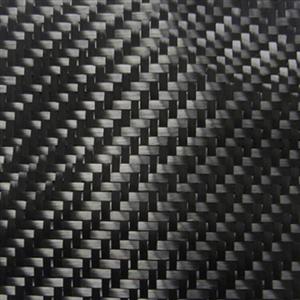Strength and lightness, excellent performance at high temperatures, few potentially dangerous weaknesses such as fractures and fatigue - composites can offer numerous advantages over more conventional materials, such as steel, in a host of applications. Their tailorability allows for virtually any combination of properties.
November 11, 2011
Strength and lightness, excellent performance at high temperatures, few potentially dangerous weaknesses such as fractures and fatigue - composites can offer numerous advantages over more conventional materials, such as steel, in a host of applications. Their tailorability allows for virtually any combination of properties. Yet a truly glaring drawback to polymer composites remains their poor performance in the sustainability arena.
Carbon fiber
Not only does the production of the most commonly used reinforcing fibers-glass, carbon, aramid-require an enormous amount of energy, other issues include the emission of volatile organic compounds (VOCs), toxicity from manufacture and the dearth of feasible options for recycling and reuse. Companies working in the composites industry have long grappled with issues surrounding composite waste and end-of-life options for fiber-reinforced polymer materials. Landfill, the preferred option, was banned by most EU Member States at the end of 2004, while for incineration, the EU has imposed limits on the permitted level of energy content of the submitted waste. Moreover, incinerated polymer composite waste generates ash, which must subsequently also be landfilled.
The time has come for the polymer composites industry in Europe to address these issues in an effective and coherent manner. And, while increasingly stringent EU legislation is forcing a transition away from the disposal of waste materials, towards more reuse and recycling, this, for composites, is a route fraught with numerous challenges. Yet the sheer volume of composite waste projected for the coming decades leaves the industry with no choice.
Around 3000 tons of carbon fiber FRP scrap is generated annually in the U.S. and Europe According to one forecast, the total combined volume of end-of-life and production waste generated by the glass thermoset composites market in Europe is expected to reach 304,000 tons by 2015, according to the European Composites Recycling Services Company. Both the boat and the automotive industry, good sources of polymer composite waste, are already looking at ways to design composites that are more easily dismantled for subsequent recycling. Yet looking further into the future, it is estimated that some 380,000 tons of fiber composites will have to be disposed of each year from the year 2040 on, comprised, among others things, of 225,000 tons of turbine rotor blade material per year worldwide from 2034, as well as the waste generated by the 6000 to 8000 commercial planes in Europe that are expected to reach end-of-life dismantlement by 2030.
And, while various recycling technologies have been developed, none is yet completely commercially viable. The two main processes are thermal and mechanical: materials are ground up and used as filler materials, or burned, either in cement kilns to generate energy or via a fluidized bed process to recover the fiber reinforcement material, potentially the part with the most recoverable value in a composite. Pyrolysis is also used in the case of carbon-reinforced materials, to recover the carbon fibers; the process is less suitable for glass fiber as it impacts adversely on the fibers' the mechanical properties. Much research is ongoing to develop additional carbon-fiber recovery technologies, as the cost of carbon fiber is high enough to warrant investing in new processes. Another process, called solvolysis is still in the research stage, which will enable chemicals in the resin to be reclaimed. Composite recycling and especially the development of applications making use of composite recyclate are clearly areas in which much remains to be done.
That said, the combined pressures of legislation and environmental concerns have not been without result. The European Composites Industry Association (EuCIA) appears now to have taken serious steps to get its sustainability act together. Last week, it launched the Recycling & Sustainability Platform of the European Composites Industry, which aims to bring the "composites industry together, to show the recycling solutions available for composites and to communicate with one voice the sustainability message of our industry'" according to the statement issued. The Platform members will work towards assessing and showing that composites are recyclable and contribute to a sustainable environment.
According to Alisa De Backer, EuCIA general manager: "Composites are recyclable and sustainable. Various projects and studies have been carried out by the industry across Europe over the years and now we are in the position to show our progress. The combination of high properties of composites and their green credentials must be a winning formula for the future of our sector. Nevertheless, as an industry we need to get together and enforce our message to our suppliers and EU legislators. Being a sustainable industry is a challenging process, but we aim to address it under the new Platform. For this initiative to be a success, the full support of the industry is mandatory."
Very commendable. Yet in 2006, a report from the National Composites Network in the UK pointed already out that "successful composite recycling requires incentives, infrastructure, recycling techniques and market commitment".
It's now almost 2012. Isn't it time for those in this industry to put their money where their mouth is?
About the Author(s)
You May Also Like


